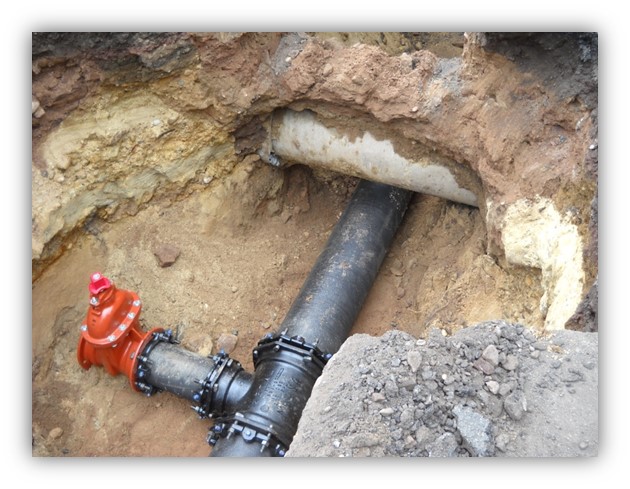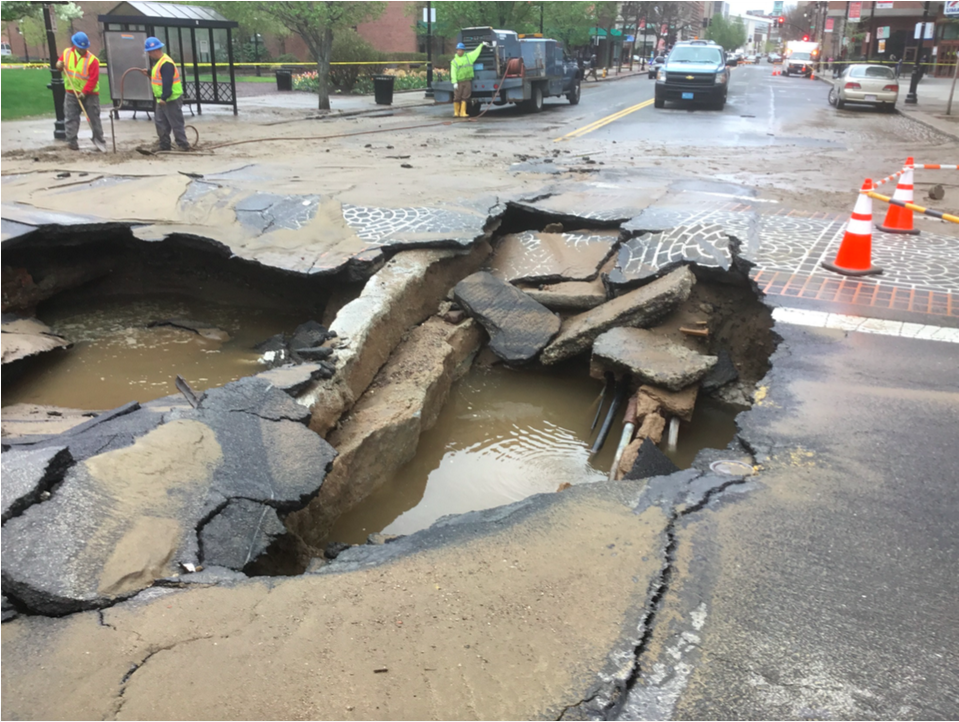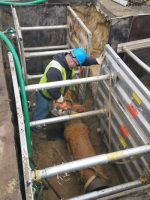From time to time, our customers may experience a water service outage, lower pressure, or discolored water due to a water main break.
Active main breaks are mapped below in real time as they are responded to by our crews. If a cone icon is visible, click on it for a status update.
Note that our crews' first priority is to protect public safety and property, so some breaks will be mapped only after crews are able to bring the immediate situation under control. Refresh the page to see updated information.
What is a water main?
Water mains are pipes beneath the streets that carry safe and clean drinking water throughout the city. They can range from 6" to 24" in diameter, but most are 6" to 8" in diameter. Individual properties are connected to water mains through water service lines.

Why do water mains break?
It is usually difficult to pinpoint a single cause of a main break, but most often, age has something to do with it. There are 580 miles of water main in Springfield and Ludlow. Of this amount, approximately 53% are over 50 years old, and approximately 25% are over 100 years old. Due to the age of our distribution system, water main breaks are unavoidable. Seasonal temperature changes, shifting or corrosive soils, or other undetectable factors can also contribute to a break.

How are water main breaks detected?
Water main breaks range from small to large. The smaller ones usually involve water running in streets or sidewalks. The larger ones can cause small floods or wash out roads and other underground utilities. The Commission also monitors the distribution system for drops in water pressure, which can indicate a break. Customers and residents can call 413-310-3501 to report a potential water main break.
Commission crews sent to investigate will look for the source of the running water, and try to determine whether it is groundwater or treated drinking water. If it is drinking water, but no source is visible, crews may use equipment to "listen" for the break location.

How are water main breaks fixed?
Once a break is found, the first priority of the crew is to protect public health and property by bringing the situation under control. Local officials such as the police department and DPW are notified via an automated notification system, and the break is prioritized for repair based on the severity of impact.
Roads and sidewalks may need to be blocked off or closed, or sand/salt brought in to address freezing water. Crews will work to shut off the valves above and below the break to stop the outflow of water. Properties located within this isolation zone may experience an interruption to their water service. Usually these interruptions last only a few hours.
Underground utilities must be marked out before any excavation can begin with heavy equipment or hand tools. The broken section is then repaired or replaced. In most cases, repairs can be completed in less than 8 hours, but in more severe cases the repairs could take days.
Why is there water discoloration after a main break?
Sometimes, though not always, there may be discoloration of water for a period of time after a water main break is repaired. This is due to sediment that may be stirred up by the shifting water flow. The water is safe to use and drink. To flush discolored water from your plumbing, run faucets with cold water for 10-15 minutes.
To Report a Main Break
Call 413-310-3501 - 24 hours a day, 7 days a week
If you would like to receive automated notification emails when there is a water main break in Springfield or Ludlow, please email your request to info@waterandsewer.org.